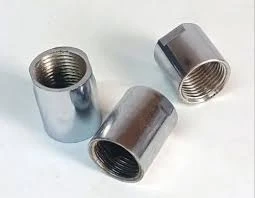-
Cangzhou Yulong Steel Co., Ltd.
-
Phone:
+86 13303177267 -
Email:
admin@ylsteelfittings.com
- English
- Arabic
- Italian
- Spanish
- Portuguese
- German
- kazakh
- Persian
- Greek
- French
- Russian
- Polish
- Thai
- Indonesian
- Vietnamese
- Zulu
- Korean
- Uzbek
- Hindi
- Serbian
- Malay
- Ukrainian
- Gujarati
- Haitian Creole
- hausa
- hawaiian
- Hebrew
- Miao
- Hungarian
- Icelandic
- igbo
- irish
- Japanese
- Javanese
- Kannada
- Khmer
- Rwandese
- Afrikaans
- Albanian
- Amharic
- Armenian
- Azerbaijani
- Basque
- Belarusian
- Bengali
- Bosnian
- Bulgarian
- Catalan
- Cebuano
- China
- China (Taiwan)
- Corsican
- Croatian
- Czech
- Danish
- Esperanto
- Estonian
- Finnish
- Frisian
- Galician
- Georgian
- Kurdish
- Kyrgyz
- Lao
- Latin
- Latvian
- Lithuanian
- Luxembourgish
- Macedonian
- Malgashi
- Malayalam
- Maltese
- Maori
- Marathi
- Mongolian
- Myanmar
- Nepali
- Norwegian
- Norwegian
- Occitan
- Pashto
- Dutch
- Punjabi
- Romanian
- Samoan
- Scottish Gaelic
- Sesotho
- Shona
- Sindhi
- Sinhala
- Slovak
- Slovenian
- Somali
- Sundanese
- Swahili
- Swedish
- Tagalog
- Tajik
- Tamil
- Tatar
- Telugu
- Turkish
- Turkmen
- Urdu
- Uighur
- Welsh
- Bantu
- Yiddish
- Yoruba

Oct . 02, 2024 00:29 Back to list
Understanding Hose Thread Fittings and Their Applications in Fluid Connections
Understanding Hose Thread Fittings A Comprehensive Guide
Hose thread fittings are vital components in various plumbing and hydraulic systems, facilitating the connection between hoses and other hardware. These fittings are essential for ensuring leaks are minimized and that fluid flows efficiently through the connected components. Whether it’s garden hoses, industrial equipment, or any system relying on fluid transfer, understanding hose thread fittings can greatly enhance the effectiveness and reliability of the connections.
Types of Hose Thread Fittings
There are several types of hose thread fittings, each serving specific applications and industries. The most common types include
1. National Hose (NH) Fittings Also known as NST (National Standard Thread), NH fittings are widely used in firefighting equipment and in applications requiring high-pressure connections. They feature a coarse thread design and are usually made from brass or aluminum for durability.
2. Garden Hose Threads Often referred to as GHT (Garden Hose Thread), these fittings are used for connecting garden hoses to spigots or other hoses. GHT threads have a slightly different thread profile and are usually found on residential outdoor plumbing.
3. British Standard Parallel Pipe (BSPP) and British Standard Tapered Pipe (BSPT) These fittings are common in Europe and are used in a variety of plumbing systems. BSPP fittings are designed for a leak-tight seal using O-rings, while BSPT fittings utilize tapered threads for a tighter seal as the fitting is tightened.
4. NPT (National Pipe Tapered) Fittings Commonly used in the United States, NPT fittings feature a tapered thread design that creates a seal as the fitting is screwed together. These are typically used in industrial applications where a sturdy, sealed connection is necessary.
Material Considerations
Hose thread fittings can be made from various materials, including brass, stainless steel, plastic, and aluminum. The choice of material impacts the fitting's strength, durability, and susceptibility to corrosion. Brass and stainless steel are favored for their resistance to rust and wear, making them suitable for use in hydraulic applications. Meanwhile, plastic fittings might be utilized for lighter applications due to their resistance to certain chemicals and lightweight nature.
hose thread fittings

The Importance of Thread Compatibility
One of the critical aspects of using hose thread fittings is ensuring compatibility between the threads. Many issues arise from mismatched threads, leading to leaks or equipment failure. Before making any connection, it's essential to check the fitting standards and thread types. Most fittings will have the type printed on them or can be identified through consultation with a supplier.
Applications and Uses
Hose thread fittings find applications across various sectors, including agriculture, construction, automotive, and residential sectors. In agriculture, for example, they are used in irrigation systems to connect hoses to water sources. In construction, heavy-duty hose fittings are powerful connectors for machinery that requires high-pressure fluid transfer.
Moreover, these fittings play a pivotal role in firefighting equipment, allowing quick connections and disconnections. In automotive applications, they may be found in coolant and fuel systems, ensuring safety and efficiency.
Maintenance and Best Practices
To ensure the longevity and reliability of hose thread fittings, regular maintenance is advised. This includes checking for wear and tear, inspecting for any debris within the fitting that could cause leaks, and ensuring that all connections are appropriately tightened. Additionally, using Teflon tape on threaded connections can help provide an extra layer of sealing, preventing leaks.
Conclusion
In conclusion, understanding hose thread fittings is crucial for anyone involved in plumbing, hydraulic systems, or fluid transfer applications. By knowing the different types available, materials used, and best practices for maintenance, users can ensure they achieve secure, leak-free connections in their systems, thereby enhancing efficiency and safety in their operations. As industries continue to evolve, the importance of reliable and effective hose thread fittings will remain a constant in ensuring that our fluid transfer systems function seamlessly.
Latest news
-
ANSI 150P SS304 SO FLANGE
NewsFeb.14,2025
-
ASTM A333GR6 STEEL PIPE
NewsJan.20,2025
-
ANSI B16.5 WELDING NECK FLANGE
NewsJan.15,2026
-
ANSI B16.5 SLIP-ON FLANGE
NewsApr.19,2024
-
SABS 1123 FLANGE
NewsJan.15,2025
-
DIN86044 PLATE FLANGE
NewsApr.19,2024
-
DIN2527 BLIND FLANGE
NewsApr.12,2024
-
JIS B2311 Butt-Welding Fittings LR/SR 45°/90° /180°Seamless/Weld
NewsApr.23,2024











